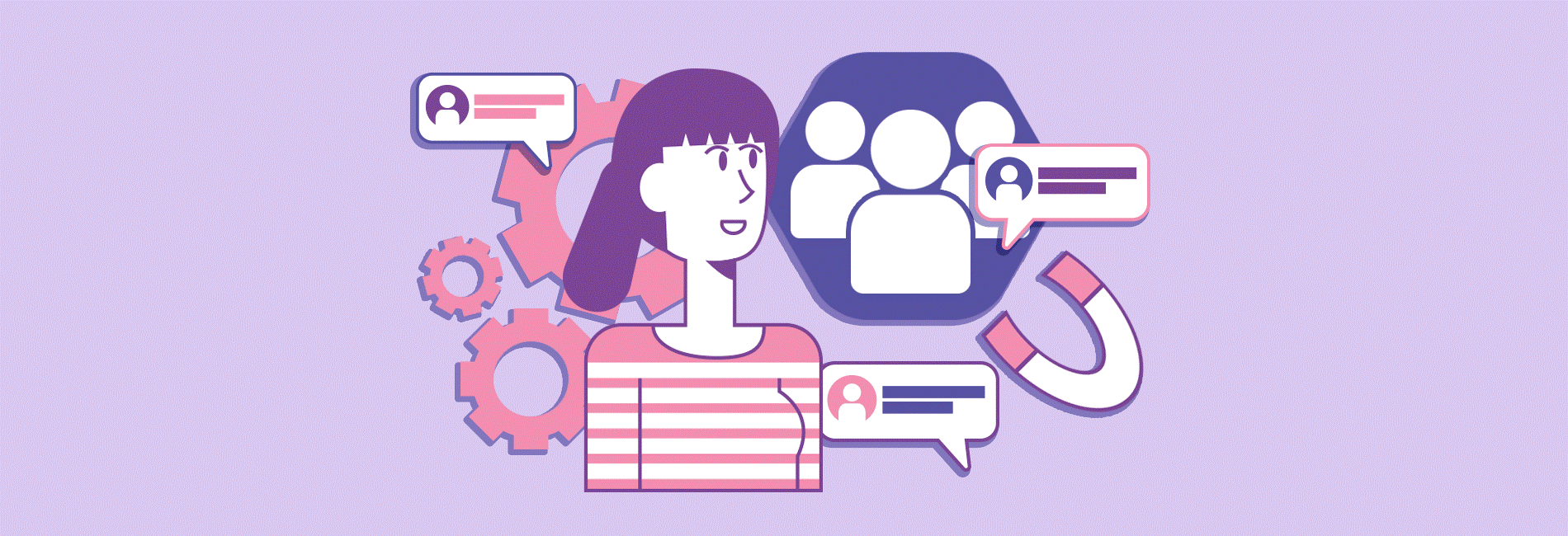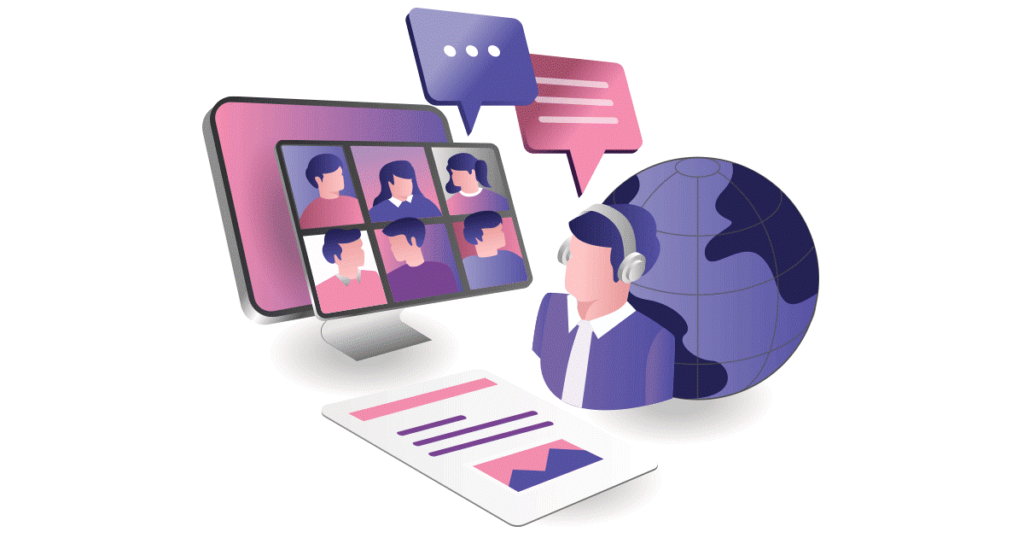
Many new businesses are preoccupied with acquiring as many consumers as possible in the early stages of their business journey. It’s a win-win situation if they make a purchase. However, as your business grows and you aim to scale, building a customer base of loyal, high-quality customers becomes increasingly critical to your return on investment.
In the long run, you don’t want clients who buy things at a low price and then go away. For high-margin products, you’re looking for clients who are enthusiastic about your brand and appreciate the value. There are several reasons why customer optimization is so important. Let’s explore them below!

What is Customer Value Optimization?
Increasing the value of customers is the goal of Customer Value Optimization, or CVO, a framework that firms use to grow their operations. The framework aims to create an incredible customer journey – by providing real help to visitors – and increase the ROI for entire digital marketing activities. Improved customer loyalty and lifelong customers result from constant optimization throughout the client lifecycle.
The process is constant even as customer behavior changes over time. Some of the examples offered that are vital for Conversion Value Optimization are:
- Lead Magnet Offers: Taking important information in return for contact information, which is usually an email address.
- Tripwire Offers: Providing low-priced products for fast and large sales.
- Core Offers: Selling high-end products at a discount to entice customers.
- Profit Maximizers: Using additional products to increase the value of each new customer’s transaction.
- Return Paths: Bring existing and new customers back into the sales funnel who are left between the purchase process.
Conversion value optimization can be implemented in your company’s strategy in various ways. We’ll get to them in a minute.
What is the Difference Between CRO and CVO?
The vast majority of online firms now necessitate an inexhaustible supply of resources for growth. Because of the wrong “direction” chosen, a good business idea can quickly turn into a complete failure. Although both CVO and CRO are widely accepted as essential tools for growing a firm, why are an increasing number of business consultants claiming that CVO outperforms CRO?
An online visitor’s achievement of a site objective is known as a “conversion.” Micro and macro conversions are the two most widely acknowledged types of conversion. In the case of an online clothing store, the macro-goal is to have a customer make a purchase. Micro conversions ( or smaller conversions) are users’ actions before achieving a primary goal ( f.i. signing up to receive emails). Additionally, let’s distinguish between CRO and customer value improvement (CVO) (CVO). Why is it important to know the definitions of these two buzzwords and how they relate to online marketing?
Conversion optimization, also called conversion rate optimization, is a method used in internet marketing to increase the number of visitors to a website who become customers or do whatever else is wanted on the page.
Customer Value Optimization, on the other hand, is a process that incorporates all three of J.Abraham’s methods for expanding a business:
- Increasing the customer base
- the number of transactions that each consumer performs, and
- Increasing the average value of each customer’s transaction
Creating a sales funnel that allows you to outspend your competitors in order to gain and retain clients is its primary objective.
CRO is a necessity in eCommerce. It is seen as a panacea for all e-commerce woes. CRO, on the other hand, will not encourage customers to make more purchases. What’s the sense of gaining more visitors and converting them into customers if you don’t turn more of them into cherished recurring clients?
Clients are the focus of every step of the Conversion Value Optimization process. Before spending money on attracting new clients, each online business must first gain a thorough understanding of its current ones.

It’s All About Determining Your Customers’ Needs
Consumers today dislike being told what to do, even when it’s for their own good. When it comes to buying, they prefer an experience tailored to their own needs. It appears that tech companies such as Amazon, Facebook, and Google can remember all about a shopper and give a personalized experience.
From Amazon to Etsy, the world’s most popular online retailers put customers in charge of their own online experience. Product suggestions and promotional offers are made based on the customer’s needs and desires when these vast platforms are used. Companies like Amazon don’t focus solely on short-term sales, but rather on long-term relationships with its customers. Today’s modern web stores have several harmful practices that result in a poor digital customer experience. The following are only a few examples:
- Popups: When a customer has just arrived at a page, nothing is more aggravating than an irrelevant popup already appearing in their face. It’s not a good start.
- Inappropriate offers: Google search advertising can easily deceive customers when they click through. Most of the time, a consumer who clicks on an ad will end up with a product completely unrelated to what they clicked on.
- Lack of support: Online sellers frequently tout their product selection as a benefit. In contrast, we do not take any steps to ensure that our visitors can make an informed choice among the hundreds of available products.
- Distracting graphics: Many web shop owners are keen to show off their wide variety of products. Too many graphic offers, messages and items might be distracting to customers. Overwhelmed visitors will leave your site if they feel like you’re yelling at them. There is a problem with too many visual pitches, communications, and products. Visitors will leave your page if they feel like you’re yelling at them, so don’t overload it with messages. Websites, specifically eCommerce sites, prefer to use a plain white background for their products to reduce clutter and distractions.
- A false sense of urgency:There are far too many virtual stores who promise customers a “limited time deal” but don’t follow through on it. These messages are designed to trick users into making an impulse buy. Customers who come back the next day to see the same discount available will lose trust in your brand.
- Lack of personalization: In many cases, no matter what a customer wants or how long they’ve been a customer, the same generic discount is offered. For example, using a 10% deal at every step of the buyer’s journey is both unpleasant and ineffective.
Some of these blunders may ring true for your online store. That’s fine, too. Marketing professionals have persuaded eCommerce merchants that the above CRO strategies are essential. Moreover, we admit that we were formerly members of the same clique.
Fortunately, you and your consumers may move forward in a more positive direction. You’ll be able to keep more current consumers while increasing your revenue. You’ll also feel better about yourself as a result of this. Customer Value Optimization is achieved in this manner.

Why Should You Take CVO Seriously?
Focusing only on Conversion Rate Optimization (CRO) is no longer a sustainable approach. Optimizing customer value should be enough to make you interested in new client acquisition, which usually costs roughly 6-7 times more than keeping your current customers.
New customers are critical to the success of any eCommerce business, so you need effective lead magnets to attract visitors from across all lead generation. We have actionable lead magnet ideas to gain more customers for your eCommerce Site.
Here are some reasons why the Conversion value optimization system should play an essential part in your marketing efforts.
Provide Live Chat to Customers to Help
When a user is perplexed, they are more likely to click the “exit” button. The explanation could be anything, such as the countless options available or the unsatisfactory product descriptions. It could also be a combination of the two. Providing online assistance is an easy way to avoid this. Your customers will appreciate the convenience of a live chat feature.
“Hello?” is all you need to say. One way to assist them in making the appropriate choice is to ask, “How may I help you?” How? It’s worth noting that more than 75 percent of average clients are satisfied with live chat service. More than three-quarters of those polled said they prefer live chat to any other medium.
What’s the harm in giving it a try? They don’t have to wait and may communicate while doing other things because they have access to round-the-clock support and step-by-step guidance on completing the task. Several companies now extensively use live chat as a primary means of interacting with customers. Several of them utilize live conversations in novel ways.
Fashion labels can be set aside. Live various companies in various industries are using chat assistance. The Bulb is an energy provider that provides customer service via live chat that real people offer. When a customer is conversing with an agent, they can see the agent’s name and photo. Even Nikon, a technological company, uses it to expedite customer service and direct the path to buying. Companies like Warby Parker, Canyon Bikes, and Goldsmiths employ Conversion value optimization.
Attract the Right Clientele
The first step in marketing your service or product is determining who your target audience is. Targeting large volumes of traffic isn’t necessary. This is because obtaining additional consumers will not be advantageous for you if it increases your company’s losses. As a result, the clients’ quality should always be the first concern.
With this knowledge, we can begin to decipher the steps involved in customer analysis. But first, let us know what kind of customers we’ll be dealing with. Customers fall into one of three categories:
- Low-value: Consumers in this category drain your time and resources, whether through meager prices or a never-ending round of phone calls to customer service. The revenue they generate is negligible at best.
- Medium value: The vast majority of shoppers fall into this category. Even though they don’t generate much revenue, they’re pretty standard.
- High-value: Getting in front of these clients will pay off handsomely in the long run.
With Conversion value optimization, businesses can discover high-value clients and improve their overall engagement with your company. Analyzing your target market is dependent on how well the product sells.
Sound Like a Person
As long as the product details are clear to clients, it’s fine to describe them. There are many different kinds of products, and each one has its own unique set of features. However, customers will be unable to benefit from this information if it is provided to them verbally.
To get the customer’s attention, an air-purifier ad clearly explains what it can achieve. A six-minute process to eliminate 99.97% of air contaminants is significantly more understandable than the complexities of how it works. Your sales pitch should focus on how your product may actually benefit your target audience on a day-to-day basis. As a result, you should aim to make your advertisement sound more human.
It Improves Conversion Rate
Once all touchpoints and attributes have been mapped, it is time to build the optimal customer experience based on your study. You apply the results on the ideal customer across the whole journey to establish an endless loop that promotes conversions and encourages repeat orders practically automatically.
You may accomplish this by providing superior customer service to your most valuable clients.
- acquiring additional customers similar to the ICP (customer and similar audiences);
- Improving the product assortment;
- Creating improved nurturing strategies (ads, email, website personalization, SMS).
It Makes Marketing Efforts Easier
A variety of marketing channels are available to help you promote your items to the people that matter most to your business, once you’ve narrowed down your target market. To get started, here are some of the most effective techniques to get your hands on leads:
- Branded Search Ads: Use Google Ads or other ad networks to promote your business. Make sure that your ads show up when people search for your brand name or words related to your brand or business. This is how your audience will be able to find your business.
- Google Shopping Ads: are another great way to show your customers that you care about them by giving them what they want. Because these ads are well-targeted, they convert at a higher rate. You can also find shopping ads on Bing or Yahoo. Start by using Google. If it works, you can keep going.
- Affiliate marketing: is when you work with other business owners in your field who are not your competitors but whose customers are similar to yours. These companies can be your affiliate partners. They can help you get clicks to your site by using their methods, and you can do the same for them. Both businesses will benefit from this. This is a good way to market when you don’t have a lot of money or want to try something different when your other ads aren’t working.

Awareness of Your Customers’ Needs Will Drive You to Success
Conversion value optimization should involve a variety of methods, including but not limited to customized emails, adverts, websites, SMS messages, welcome screens, and unique customer assistance, as well as a variety of other means of communication. Your customers will feel as if you truly care about them if you pay attention to what they want and need.
An eCommerce website’s conversion rate rises when each customer experience is tailored to meet their specific needs and interests. The goal is to create a customer experience that is both unique and enticing via the Conversion value optimization’s built-in offers.





